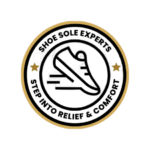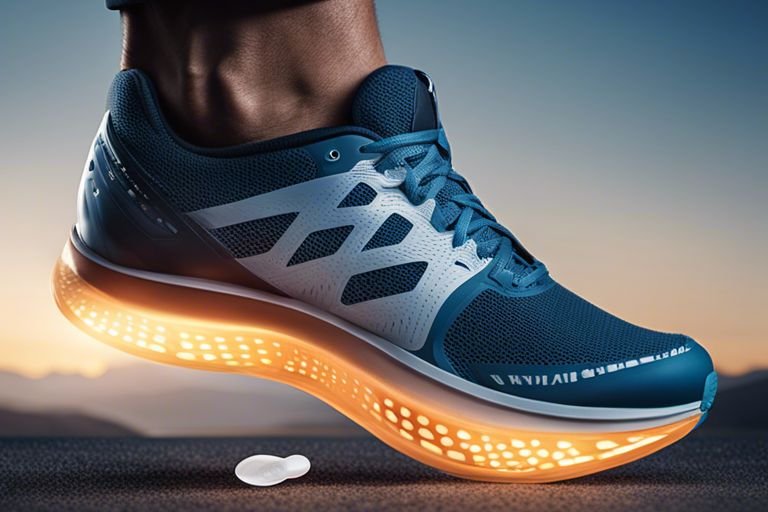Wondering if running without insoles in your shoes might be the right move for you? While it might seem like a small decision, it can actually have a big impact on your foot health. In this article, we’ll discuss the pros and cons of running without insoles in your shoes and how it can affect your foot health. From improved natural arch support to the potential for increased risk of injury, we’ll cover everything you need to know to make an informed decision about whether running without insoles is the right choice for you. So, let’s dive in and examine the potential impact on your foot health.
Key Takeaways:
- Pros of running shoes without insoles: Running shoes without insoles can provide a more natural feel and better ground contact, which can help improve balance and proprioception. Additionally, they may allow your foot to function more naturally, potentially reducing the risk of certain foot conditions and injuries.
- Cons of running shoes without insoles: Without the extra cushioning and support provided by insoles, running shoes may not absorb shock as effectively, leading to increased impact on your feet and legs. This can potentially contribute to discomfort, fatigue, and an increased risk of overuse injuries.
- Considerations for foot health: When deciding whether to use insoles in your running shoes, it’s important to consider your individual foot mechanics and any existing foot conditions. Consulting with a medical professional or podiatrist can help determine the best approach for maintaining your foot health while running.
The Anatomy of a Running Shoe
If you’ve ever wondered why running shoes are designed the way they are, understanding their anatomy can provide valuable insight. Running shoes are specially crafted with various components that work together to provide support, stability, and comfort for your feet. Each part of the shoe plays a crucial role in ensuring that your feet are protected during physical activity.
Standard Components and Their Function
Running shoes are made up of several standard components, each serving an essential function. The outsole, or bottom of the shoe, provides traction and durability, allowing you to grip the ground and withstand wear and tear. The midsole, located between the outsole and the upper, serves as a cushioning layer that absorbs shock and impacts. The upper is the top part of the shoe that holds your foot in place and provides breathability and support. The heel counter, located at the back of the shoe, offers stability and helps prevent overpronation. Lastly, the toe box gives your toes room to move and prevents constriction.
Specific Role of Insoles
One of the most important components of a running shoe is the insole, also known as the sockliner. The insole is the inner part of the shoe that your foot directly rests on. Its primary function is to provide cushioning and support for your foot, ensuring comfort and reducing the risk of injury. Insoles also help manage moisture and odor inside the shoe, keeping your feet feeling fresh and dry during your runs. Some insoles are removable, allowing you to customize your running shoes with orthotic inserts if needed for additional support.
Pros of Running Shoes Without Insoles
Even though it may seem counterintuitive, running shoes without insoles can actually offer benefits for your foot health. By removing the insoles, you are able to experience improved foot strength and mechanics as well as enhanced ground feedback and running experience.
Improved Foot Strength and Mechanics
When you run without insoles, your feet are forced to work harder to provide stability and support. This can lead to improved foot strength, as the muscles in your feet are more actively engaged. Additionally, without the cushioning of insoles, you are able to feel the ground more directly, which can improve your proprioception and overall running mechanics.
Enhanced Ground Feedback and Running Experience
Running without insoles allows for a more direct connection to the ground, providing enhanced ground feedback. This can improve your running experience by allowing you to feel the terrain more intimately, which can lead to better balance and agility. Additionally, by removing the insoles, you may also experience a greater sense of freedom and agility as your feet are able to move more naturally within the shoes.
By running without insoles, you can potentially improve your foot strength and mechanics, leading to better overall running performance. Additionally, the enhanced ground feedback can provide a more dynamic and engaging running experience, potentially improving your overall agility and balance.
Cons of Running Shoes Without Insoles
Not utilizing insoles in your running shoes can lead to several negative consequences for your foot health. While this may seem like a minimal issue, it’s important to consider the potential drawbacks of running in shoes without insoles.
Increased Risk of Injury and Stress
Without the proper support provided by insoles, your feet are more susceptible to injury and stress. Insoles are designed to absorb shock and provide cushioning to your feet, helping to reduce the impact of each step. Without them, you are at a higher risk of developing conditions such as plantar fasciitis, shin splints, and stress fractures. This can result in debilitating pain and longer recovery times, ultimately hindering your running performance and overall foot health.
Potential for Decreased Arch Support and Comfort
When you run without insoles, you are missing out on the additional arch support that they provide. This can lead to decreased comfort during your runs, as well as potential long-term effects on your foot structure. Without adequate arch support, you may experience increased fatigue and discomfort, ultimately impacting your running form and overall performance. Additionally, the lack of arch support can contribute to the development of flat feet, which can lead to chronic foot problems and pain.
Alternatives and Compromises
Now that you’ve considered the pros and cons of running without insoles, you may be wondering if there are any alternatives or compromises for your foot health. Here are a couple of options to consider before making a decision.
Custom Orthotics as a Solution
If you’ve been experiencing discomfort or pain while running without insoles, it may be worth exploring custom orthotics as a solution. These are specially made shoe inserts that are designed to provide support and stability for your feet. Custom orthotics can help address any structural imbalances or issues with your foot mechanics and provide the necessary cushioning and support for your specific needs. While they may be a bit more expensive than generic insoles, the investment can be worth it for the long-term health of your feet.
Transitioning Safely to Insole-free Running
If you’re determined to continue running without insoles, it’s essential to transition safely to avoid any potential negative effects on your foot health. Slowly reduce the use of insoles in your running shoes, starting with shorter runs without insoles and gradually increasing the duration over time. This will give your feet the opportunity to adapt to the changes and minimize the risk of injuries or discomfort. Additionally, focus on strengthening your feet and ankles through specific exercises to provide added support and stability during runs without insoles.
Running Shoes Without Insoles – Pros and Cons for Your Foot Health
From above analysis, it is clear that using running shoes without insoles can have both positive and negative implications for your foot health. While it may provide a more natural feel and potentially improve your running performance, it can also lead to increased strain on your feet and potential injury. It is important to carefully consider the needs of your feet and consult with a professional to determine whether running shoes without insoles are a suitable option for you. Ultimately, the decision should be based on what will best support and protect your foot health in the long run.
FAQ
Q: What are the pros and cons of running without insoles in your shoes?
A: Running without insoles can provide a more natural feel and allow for better ground contact and stability. However, it may lead to increased impact on your feet and lower body, potentially causing discomfort and increasing the risk of injury.
Q: Can running without insoles affect foot health?
A: Yes, running without insoles can impact foot health. Without the cushioning and support provided by insoles, there is an increased risk of developing conditions such as plantar fasciitis, stress fractures, and general foot fatigue. It’s important to consider the potential impact on foot health when choosing to run without insoles.
Q: Are there any situations where running without insoles may be beneficial?
A: Some runners may find that running without insoles can help strengthen their foot muscles and improve their overall running form. However, this should be approached with caution and may not be suitable for everyone. It’s important to consult with a healthcare professional or a podiatrist to determine whether running without insoles is appropriate for your individual foot health and running goals.

